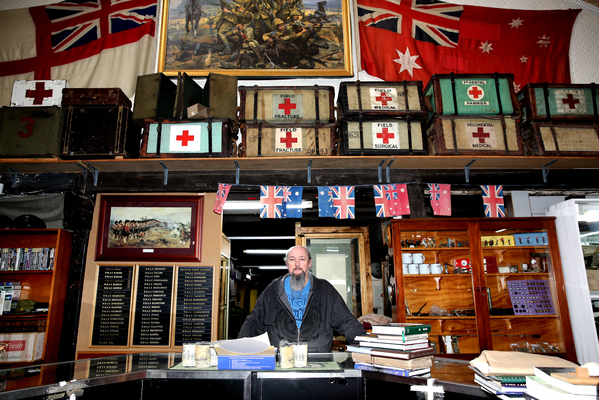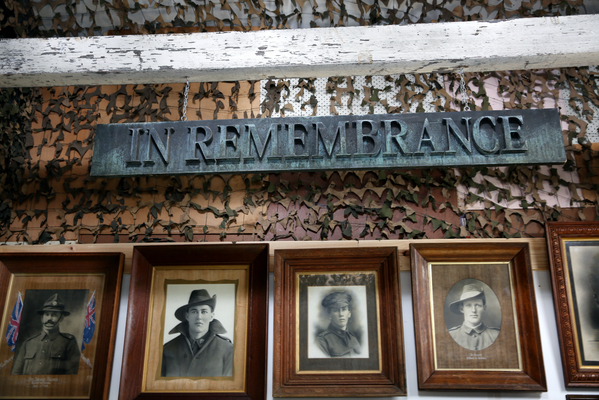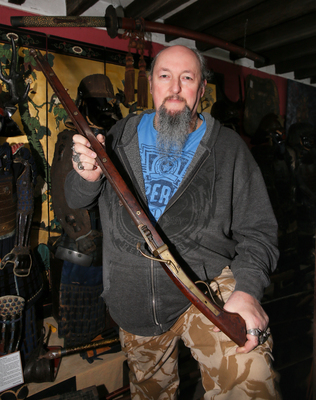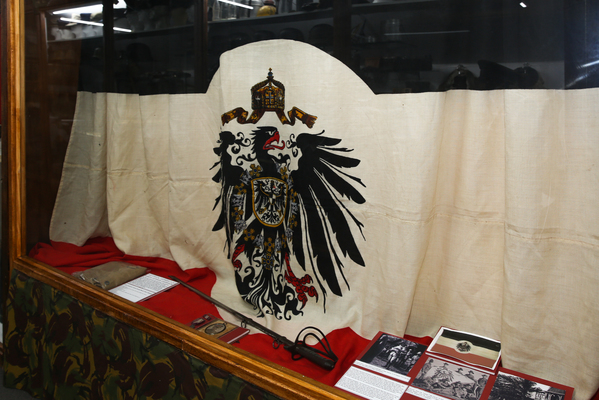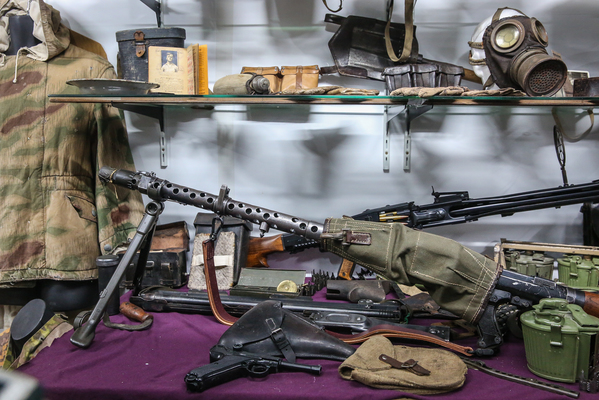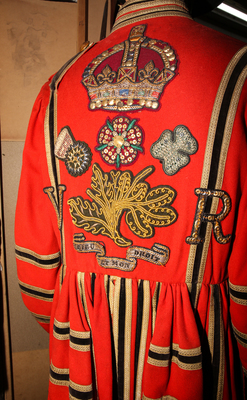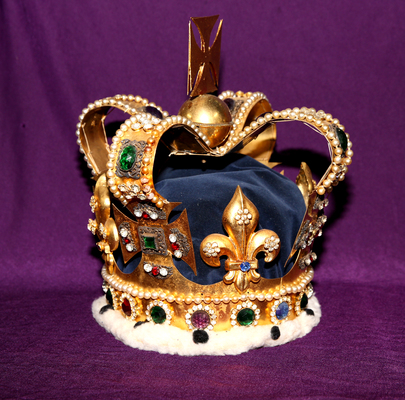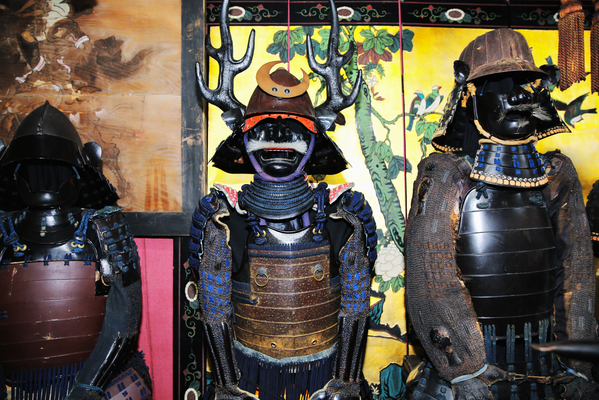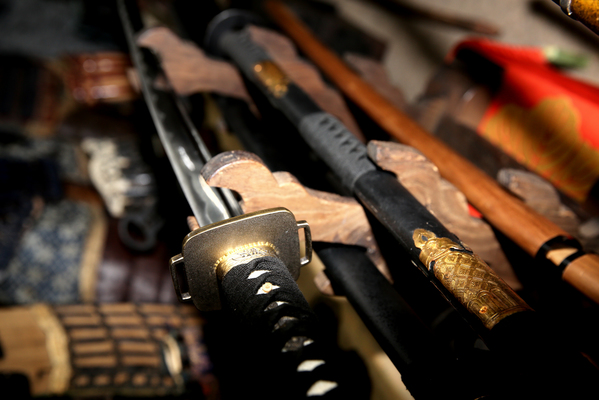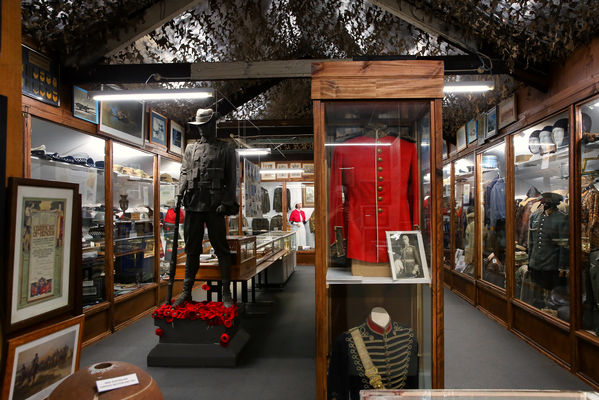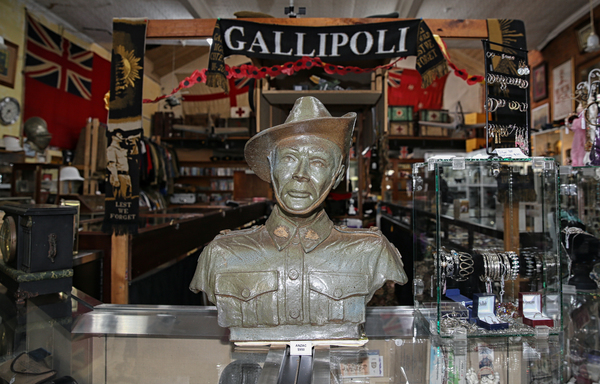Swords, armour, badges and bayonettes – ELISSA FRIDAY discovers an extensive military museum discreetly tucked away behind an antiques shopfront on Geelong’s main shopping strip.
Pictures: Rebecca Hosking
Collecting is about more that just sheer accumulation for Newtown’s Graeme Acton.
“The beauty of collecting is about saving something from being ruined and so people can see it,” Graeme says while browsing his military museum, discreetly tucked away over two floors at the back of his antique store in central Geelong.
“I collect antiques not just because they are old but for the artistic point of view.”
Graeme has been collecting military antiques and memorabilia for nearly 30 years.
The army service of some family members influenced Graeme’s interest in the military. But his passion for collecting items of warfare really kicked-off when a World War II veteran gave him a sword discovered during a house clean-up.
“It turned out to be a very old and genuine Samurai sword, even signed and chiselled in the middle,” Graeme says.
But when Graeme began collecting few people knew how to interpret the sword’s signature characters, while most of those who could read the chiselled wording were reluctant to reveal its meaning.
Graeme decided to teach himself to be able to interpret the characters so he could date Samurai swords.
“Most of what I learnt was out of a book with two Japanese sword collectors who, obviously, were Japanese, so they knew how to teach it. It turned out the words were written in kanji, the older Japanese language and I’m still learning it.”
The painstaking research expanded Graeme’s interest in military swords beyond just the Japanese designs.
He now regards swords from various militaries around the world as “objects of art”.
“Twenty years ago I used to run a continuous ad in the paper and all it said was ‘Swords, Swords, Swords – cash paid’.
“I don’t think of them as weapons, even though obviously they are.”
However, Graeme’s interest in the Japanese swords remains strong and has progressed to Samurai armour.
Ten years ago he even worked with the national gallery setting up Samurai armour for an exhibition of turn-of-the-century photographs.
The Samurai armour is “truly what I collect”, Graeme says.
“Of all the things I have here in the museum, the Samurai armours are the oldest things in the shop, dating back 250 years minimum.”
Along with the Japanese swords and armour, Graeme’s collection of antiques was initially displayed in his own home.
“It became a shop by invitation,” he chuckles.
But his aim was to create a museum within an antiques store. He opened his first shop on Geelong’s Corio Street before realising his dream at Moorabool Street’s Armour Antiques and Military Museum five years ago.
However, it’s not all just swords and armour – Graham considers one of his most “important” items to be a large flag hanging upstairs and dating back to 1914.
It was the first German flag surrendered to an allied force in World War I, he reveals.
“It has the entire provenance with it; as well as a sword and a medal from one of the officers when it was surrendered,” Graeme says proudly.
“It’s probably the most unique item I’ve got here as far as wartime”.
For a gold-coin “donation“, visitors can inspect the museum’s ground floor showcase of Samurai armour, early 1900s British uniforms, including two Beefeaters, and other military uniform items from countries including Germany, France, Belgium, and Japan.
Downstairs also host a treasure trove of badges, battlefield trench art, books, medals and photos, while upstairs is dedicated to tributes.
“People do hesitate on going upstairs in the museum here but the ones who do go up there see that it’s about remembrance and not glorifying war at all,” Graeme explains.
“It’s not just about the soldiers it’s also about the families and the after effects of war.
“The whole point of what I do is not about me, it’s about them – the soldiers and their families. When I put something up here it’s to tell a story.”
Graeme’s runs the shop and museum with wife Rickie, who also has a keen interest in military antique collectables.
“Rickie really enjoys researching the personal stories about soldiers,” Graeme says.
Graeme’s has accumulated his exhibits in all sorts of ways, including buying like-minded friends’ items when they decide to change the direction of their own collections.
Other methods of collection have helped Graeme restore the dignity of personal citations given to Australian Diggers, such as the portraits and certificates awarded by councillors for wartime service.
He’s found them in closed down RSL clubs, dumped in skip bins and cast aside without their original frames.
“It wasn’t that uncommon 20 years ago in particular with the portraits and certificates to World War I soldiers that people would remove the portrait and replace it with a painting instead,” Graeme explains.
Many of the portraits and certificates now take pride of place on the museum’s walls, within frames resembling the originals.
As well as preserving the past, Graeme also enjoys observing future generations visiting his museum.
Some children can point out various objects and explain their significance, he says.
“That’s nice,” Graeme smiles.
“When I was at school we learnt more about American history than Australian but with the 100 year celebration of World War I it’s made a difference – kids are interested.”


